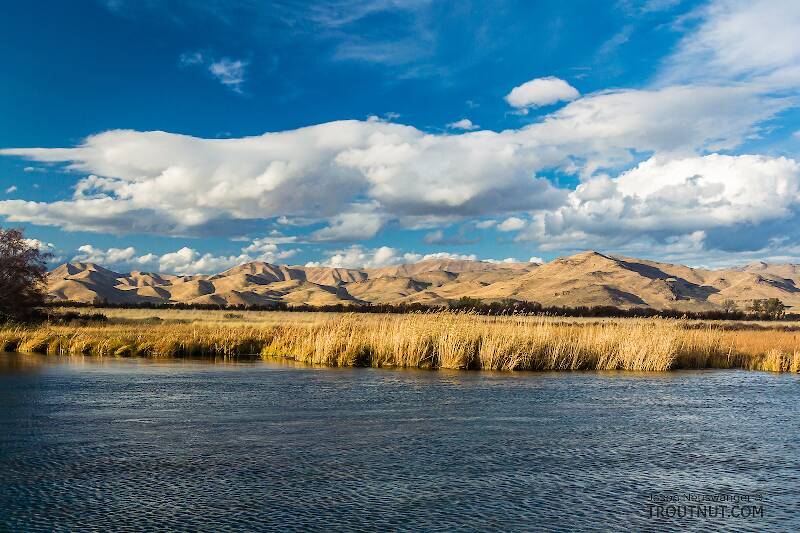
Blue-winged Olives
Baetis
Tiny Baetis mayflies are perhaps the most commonly encountered and imitated by anglers on all American trout streams due to their great abundance, widespread distribution, and trout-friendly emergence habits.
Featured on the forum

This is an interesting one. Following the keys in Merritt R.W., Cummins, K.W., and Berg, M.B. (2019) and Jacobus et al. (2014), it keys clearly to Ephemerella. Jacobus et al provide a key to species, but some of the characteristics are tricky to interpret without illustrations. If I didn't make any mistakes, this one keys to Ephemerella mucronata, which has not previously been reported any closer to here than Montana and Alberta. The main character seems to fit well: "Abdominal terga with prominent, paired, subparallel, spiculate ridges." Several illustrations or descriptions of this holarctic species from the US and Europe seem to match, including the body length, tarsal claws and denticles, labial palp, and gill shapes. These sources include including Richard Allen's original description of this species in North America under the now-defunct name E. moffatae in Allen RK (1977) and the figures in this description of the species in Italy.

Troutnut is a project started in 2003 by salmonid ecologist Jason "Troutnut" Neuswanger to help anglers and
fly tyers unabashedly embrace the entomological side of the sport. Learn more about Troutnut or
support the project for an enhanced experience here.
Male Stenonema ithaca (Light Cahill) Mayfly Dun Pictures
Based on the identical size, shape, and relative proportions of different body parts, I'm pretty sure this dun is of the same species as two spinners I collected at about the same time. The color is dramatically different, but that's to be expected with many of these species in the transition from dun to spinner.
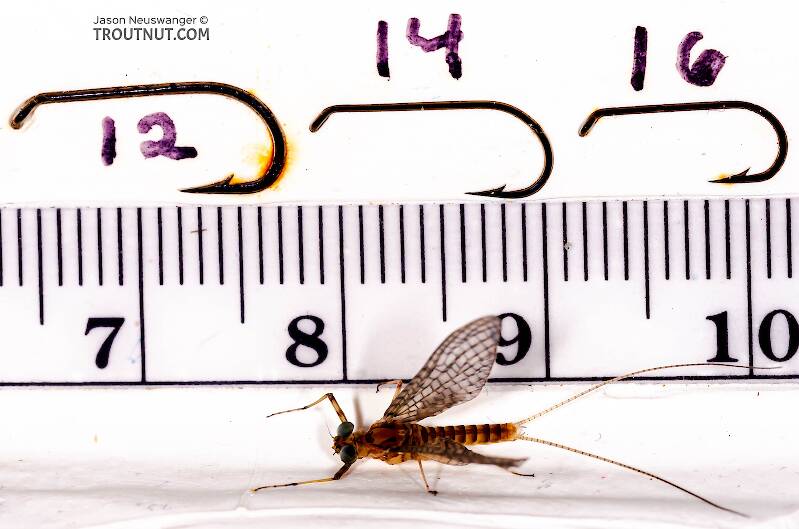
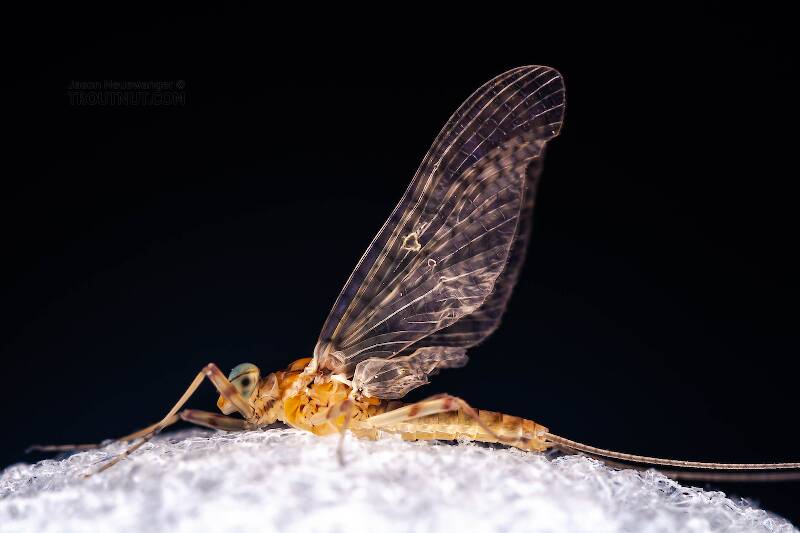
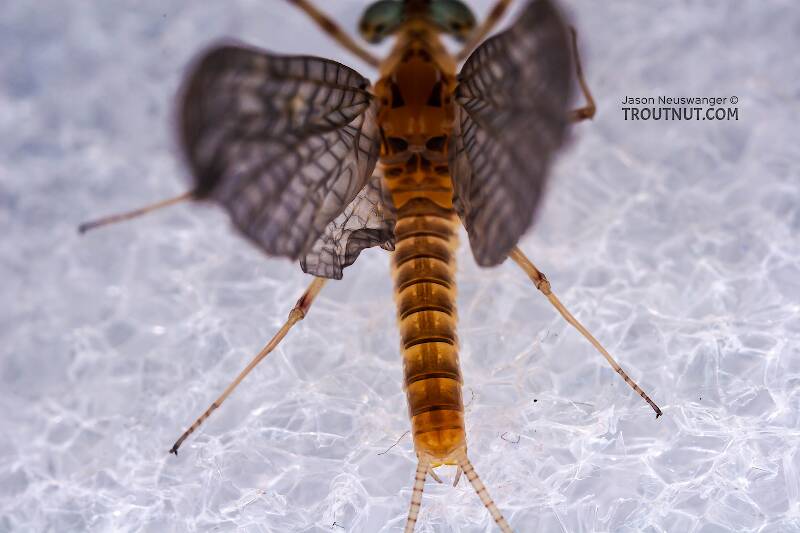
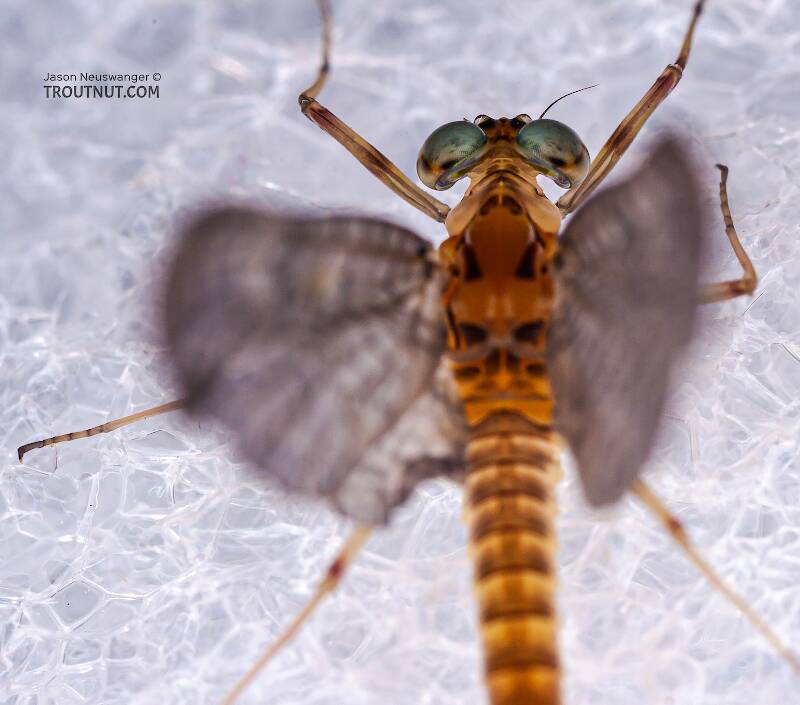
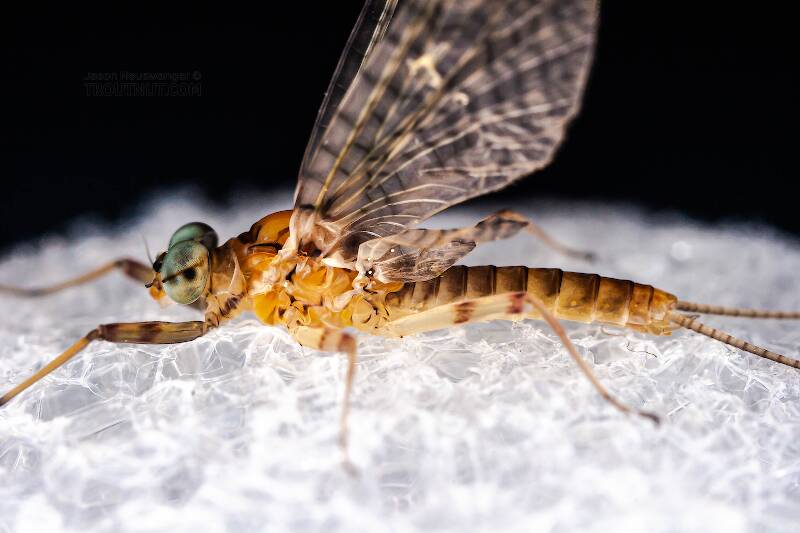
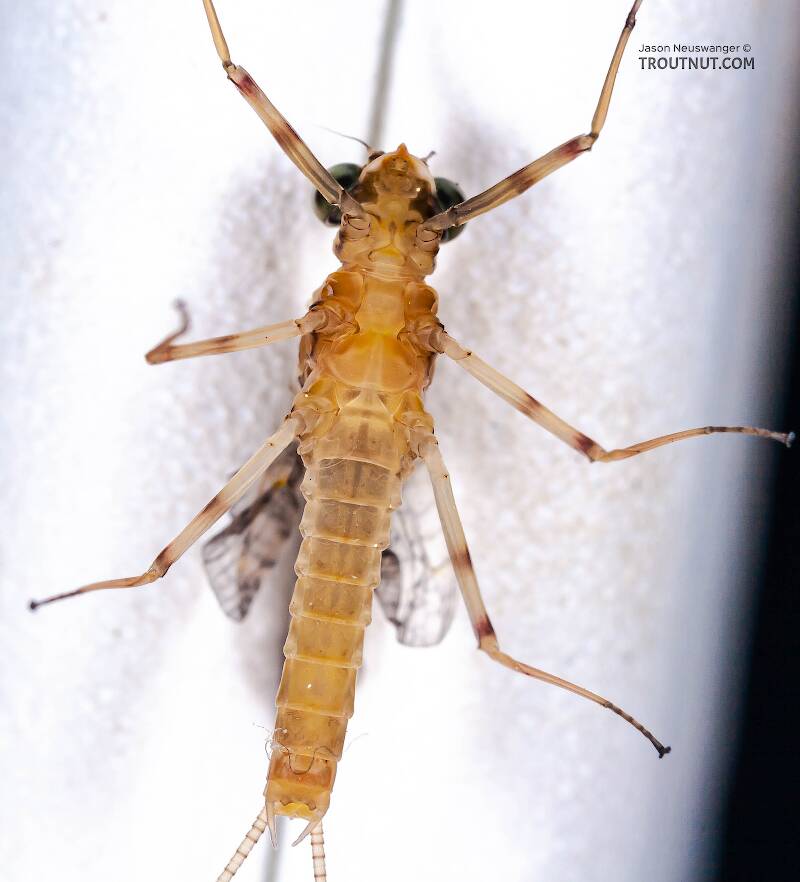
This mayfly was collected from the West Branch of the Delaware River in New York on June 7th, 2007 and added to Troutnut.com by Troutnut on June 8th, 2007.
Discussions of this Dun
Cahills
12 replies
Posted by Dryfly on Jun 5, 2010
Last reply on Jun 11, 2010 by Wiflyfisher
Do Cahills ever come off in enough numbers for a rise to occur? Around here, they trickle off annoyingly, and never get much trout attention.I am wondering about this, cause I saw some spinners at a DQ last night. Are they ever real important?
Start a Discussion of Dun
References
- Jacobus, L. M., Wiersema, N.A., and Webb, J.M. 2014. Identification of Far Northern and Western North American Mayfly Larvae (Insecta: Ephemeroptera), North of Mexico; Version 2. Joint Aquatic Science meeting, Portland, OR. Unpublished workshop manual. 1-176.
- Merritt R.W., Cummins, K.W., and Berg, M.B. 2019. An Introduction to the Aquatic Insects of North America (Fifth Edition). Kendall/Hunt Publishing Company.
Male Stenonema ithaca (Light Cahill) Mayfly Dun Pictures
Collection details
Location: West Branch of the Delaware River, New York
Date: June 7th, 2007
Added to site: June 8th, 2007
Author: Troutnut
Date: June 7th, 2007
Added to site: June 8th, 2007
Author: Troutnut

